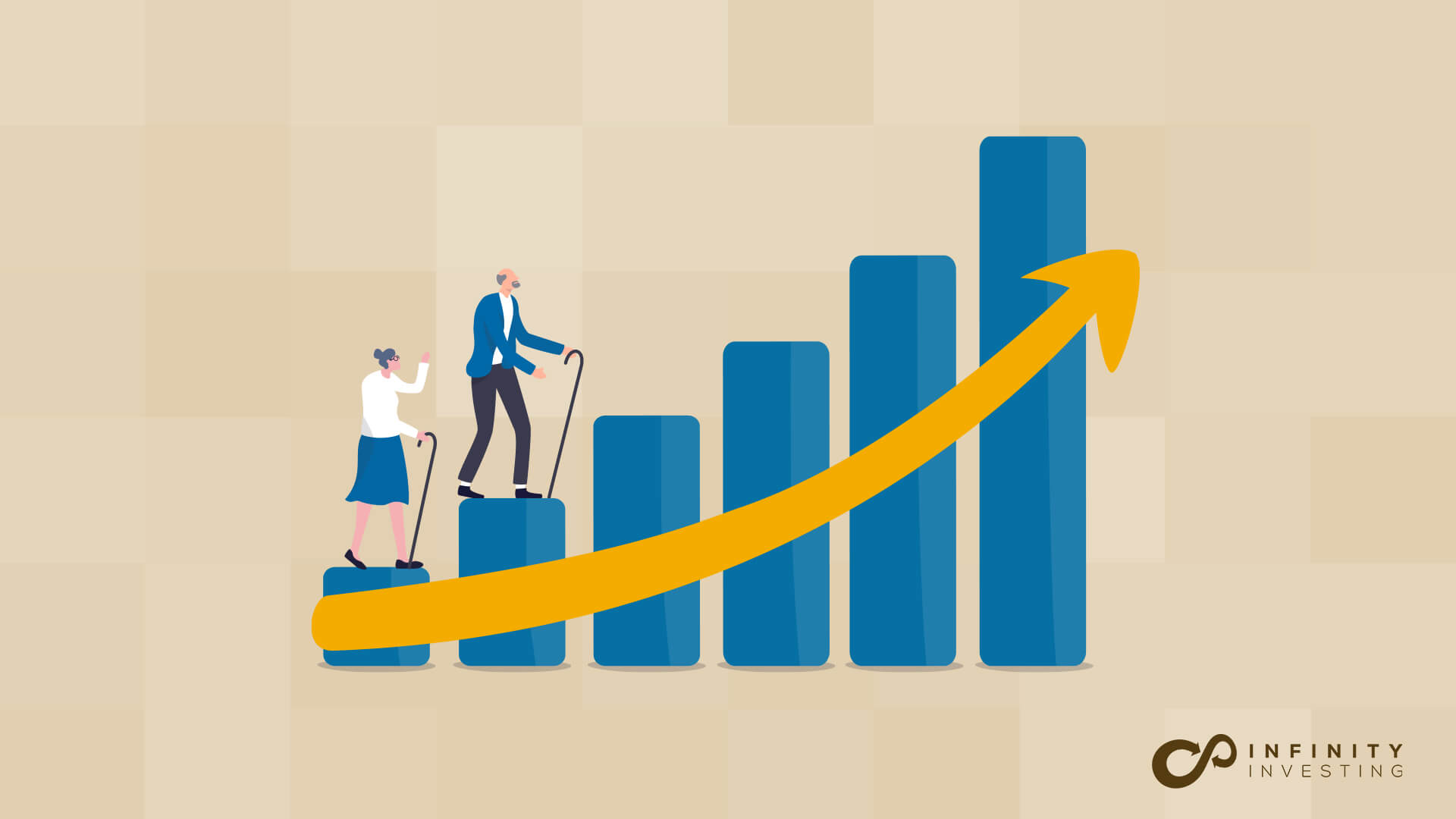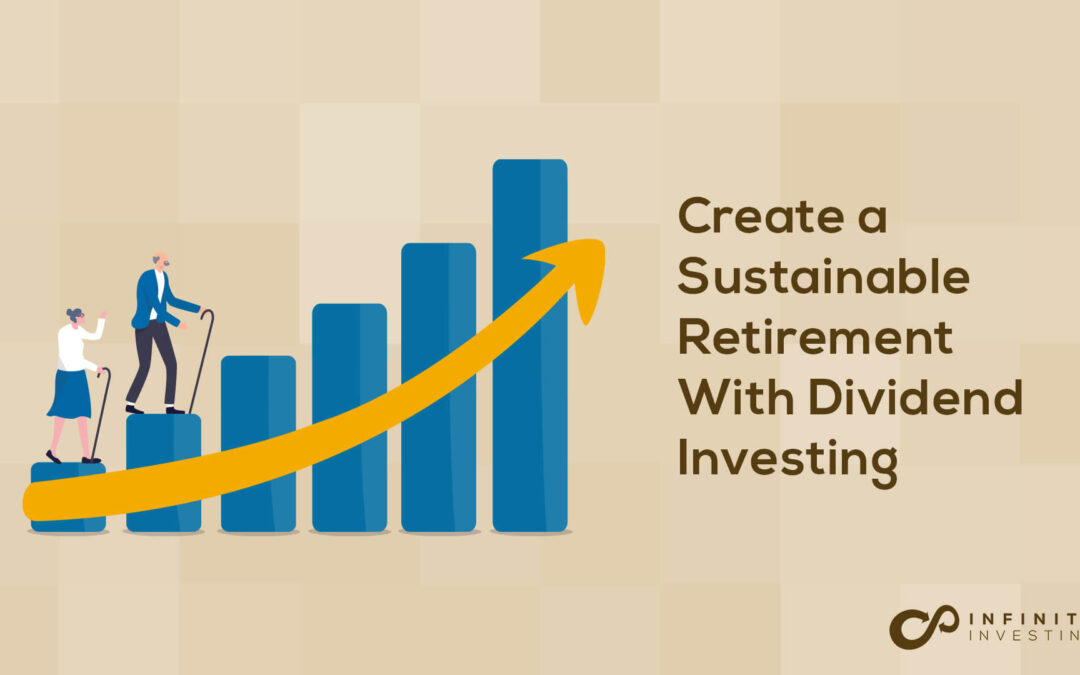
It’s never too early to begin planning for retirement, especially since the longer you invest in the market, the more you can earn. Many stocks pay shareholders a percentage of the profits they receive, which, when reinvested, can be used to create a sustainable retirement plan. Read on to learn about the benefits of dividend stocks, with tips to help maximize your retirement income using this investment strategy.
Key Takeaways
- Dividends are shared profits that companies issue to shareholders every quarter.
- Dividend investing is a strategy that involves reinvesting dividends to take advantage of compounding interest.
- Investing in dividends offers many benefits, including flexible income and earning over inflation.
- You must invest in dividend-paying stocks to benefit from dividend payments.
- Research can help you choose sustainable dividend-paying stocks likely to continue sharing profits.
What Are Dividends?
Dividends are payments that companies issue to shareholders after earning a profit. Some companies issue dividends every quarter, but some investors may receive payments less or more often than that. Companies aren’t required to issue dividends, but many do. You don’t have to do anything to receive dividends unless you reinvest them into the market.
What Is Dividend Investing?
Dividend investing is a strategy that involves reinvesting your dividend payments. Any dividends you receive through investing are yours, meaning you can withdraw or reinvest them. To earn a sustainable retirement from dividend investing, it’s crucial that you reinvest any dividends you receive.
Your reinvested dividends will earn capital appreciation and interest, significantly increasing over time. You can increase your returns much faster through dividend investing and compounding interest. Living off dividend payments during retirement is possible when planned and invested properly.
Benefits of Dividend Stocks
Dividend stocks offer many benefits, including:
- Flexible income: Dividend stocks offer flexible income since you can choose what to do with the money you receive. You can withdraw your dividends or reinvest them and wait to use them until retirement.
- Combating inflation: The returns from dividends can help combat inflation, especially if you choose stocks with above-average growth rates.
- Tax benefits: Investing in dividends offers tax benefits, including lower tax rates and the ability to defer your tax obligations until you withdraw the money.
- Risk tolerance: Dividend stocks tend to be less risky. This makes investing in dividend stocks a great way to offset riskier investments.
- Historic returns: Dividend stocks have historically performed better than the stock market in general. You may experience lower-risk returns because dividend-paying stocks offer two sources of income, dividend payments and capital appreciation
Infinity Investing Featured Event
In this FREE event you’ll discover how the top 1% use little-known “compounders” to grow & protect their reserves. Our Infinity team of experts show you how to be the best possible steward of your finances and how to make your money and investments work for you instead of you working for them. Regardless of your financial situation today, you’ll have a road map to get to where you want to be.
How To Create a Sustainable Retirement With Dividend Investing
Use these tips to create a sustainable retirement through dividend investing:
Invest in Dividend-Paying Stocks
It’s important to note that not all stocks are dividend-paying and to benefit from this strategy, you’ll need to choose ones that are. Dividend-paying stocks are specific investments that pay dividends or returns to investors. However, it’s also important to note that just because a stock pays dividends now doesn’t mean it always will. Companies that lose money may stop paying dividends temporarily or permanently.
Choose Sustainable Dividends
Carefully choosing the stocks you invest in can also help you avoid losses. Sustainable dividend-paying stocks come from companies that are in a position to pay their shareholders, even during temporary downturns in business. One way to determine if a stock is sustainable is to evaluate the percentage of profits they pay as dividends. While you may receive less from companies that pay less than 50% of profits to dividends, this is a much more sustainable plan, meaning the company is more likely to continue making these payments.
You can also review the history of any dividend stocks you’re considering. Review how long the company has been paying dividends to shareholders and if there were any points in history when it stopped issuing payments.
Avoid High-Yield Stocks
While it may be tempting to choose dividend-paying stocks with the highest yields, this may not always be the best strategy for retirement planning. Stocks with higher yields tend to be riskier, meaning the income isn’t always sustainable. High yields may also result from high one-time distributions, giving you an inaccurate asset valuation. Instead, look for dividend-paying stocks with steady, moderate yields.
Diversify Your Dividend Investments
Diversifying your investments also helps manage risk. Like other stocks, dividend stocks may be low, moderate, or high risk. A good mix of all risk types allows you to offset losses in one asset with returns in another. High-risk dividend-paying stocks are also at risk of stopping dividend payments, making it essential to invest in moderate- or low-risk stocks that will likely continue making payments to shareholders.
Set up Automatic Investments
Automatic reinvesting ensures you continue to reinvest your dividend payments. Your dividends won’t earn anything unless you reinvest them yourself or set up an automatic plan. Setting up automatic investments is as easy as enrolling in a dividend reinvestment plan (or DRIP) with your brokerage. Automatic reinvestments can also remove the temptation to withdraw funds after receiving dividend payments.
Plan for Taxes
All capital gains are subject to taxes, including dividend payments. Planning for taxes before retirement can help you maintain a sustainable income. The great thing about dividend investing is that you won’t owe taxes until you begin collecting dividend payments. Additionally, as long as you invest in dividend-paying assets for at least 12 months, you may qualify for tax breaks.
Short-term investments, which are assets you buy and sell in less than 12 months, are taxed as ordinary income, which can be as high as 35% for some investors. When you hold on to the stocks for over one year, you’re taxed at 0%, 15%, or 20%, depending on your taxable income and filing status. If you wait until retirement, you may be in a lower tax bracket, meaning you’ll pay less in taxes.
Control Costs
Trading fees and commissions can cut into your retirement income. Choose brokerages with minimal fees to control costs and maximize profits. It’s also important to be aware that some brokers may also charge an annual maintenance fee to reinvest dividends. Make sure you understand these fees and account for them when calculating your retirement income through dividend payments.
Consider Investing in Dividend Funds
Dividend stocks are individual assets that pay shareholders quarterly profits. Dividend funds allow you to invest in a collection of stocks, which helps with diversification and risk management. Instead of receiving dividends based on individual stock performance, you’ll receive them per share based on the number of shares you own.
Invest for the Long Term
Creating sustainable retirement income through dividend investing is a long-term strategy. The longer you’re willing to hold on to assets, the more you’ll earn in dividends and compounding interest. You can also help mitigate risk with long-term investments by managing the ups and downs of the market.
Assess Your Risk Tolerance
As a general rule, riskier dividend stocks have the potential for higher returns, and less risky dividend stocks pay more moderate returns. When creating your dividend investing strategy, it’s essential to consider your risk tolerance. Risk tolerance refers to how comfortable you are with risk.
It also refers to how near you are to retirement. Younger investors may be able to accept more risk since they have more time to make up for losses before retirement. Investors nearing retirement age may want to limit risk to ensure they have enough funds available for retirement. The great thing is that you can take advantage of dividend investing regardless of your risk tolerance. Dividend-paying stocks are available in many industries with a wide range of risk levels.

How Much Do You Need To Earn in Dividends for Retirement?
There isn’t a set number to aim for when creating a sustainable retirement plan through dividend investing. Ideally, you should expect to earn an average of 2% of your dividend-paying portfolio yearly. Let’s say you have $600,000 in stocks that pay a 2% annual yield. In this scenario, you can expect to earn around $12,000 per year or $1,000 per month.
If your dividend-paying stocks can generate slightly more at a 3% annual yield, you can expect to earn around $18,000 per year or $1,500 per month. Of course, returns vary depending on market performance, investment amount, and dividend payments. Dividend investing can be a great way to increase the funds available during retirement, especially when you add in income from Social Security, 401(k) funds, and, if available, a pension plan.
Sign Up for a Pro Membership Today
Do you want to learn more about how dividend investing can help you plan for retirement? Sign up for Infinity Investing’s 360 Pro membership today to access tips and learning tools that help you choose the best investments to meet your goals. A paid membership offers you the resources you need to make the best investment decisions for your financial future.
It’s possible to create a sustainable retirement plan through dividend investing. By defining your financial goals and setting up automatic reinvestments, you can generate wealth and plan for retirement through dividends. Choosing the right dividend-paying stocks and planning ahead of taxes can help you maximize your returns and enjoy a financially comfortable retirement.
Infinity Investing Featured Event
In this FREE event you’ll discover how the top 1% use little-known “compounders” to grow & protect their reserves. Our Infinity team of experts show you how to be the best possible steward of your finances and how to make your money and investments work for you instead of you working for them. Regardless of your financial situation today, you’ll have a road map to get to where you want to be.

